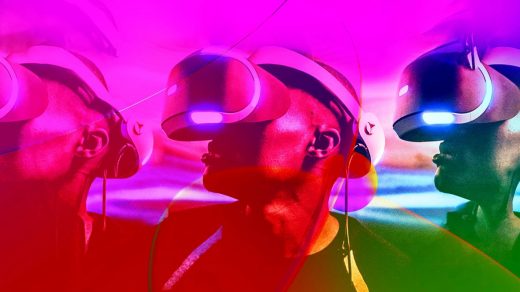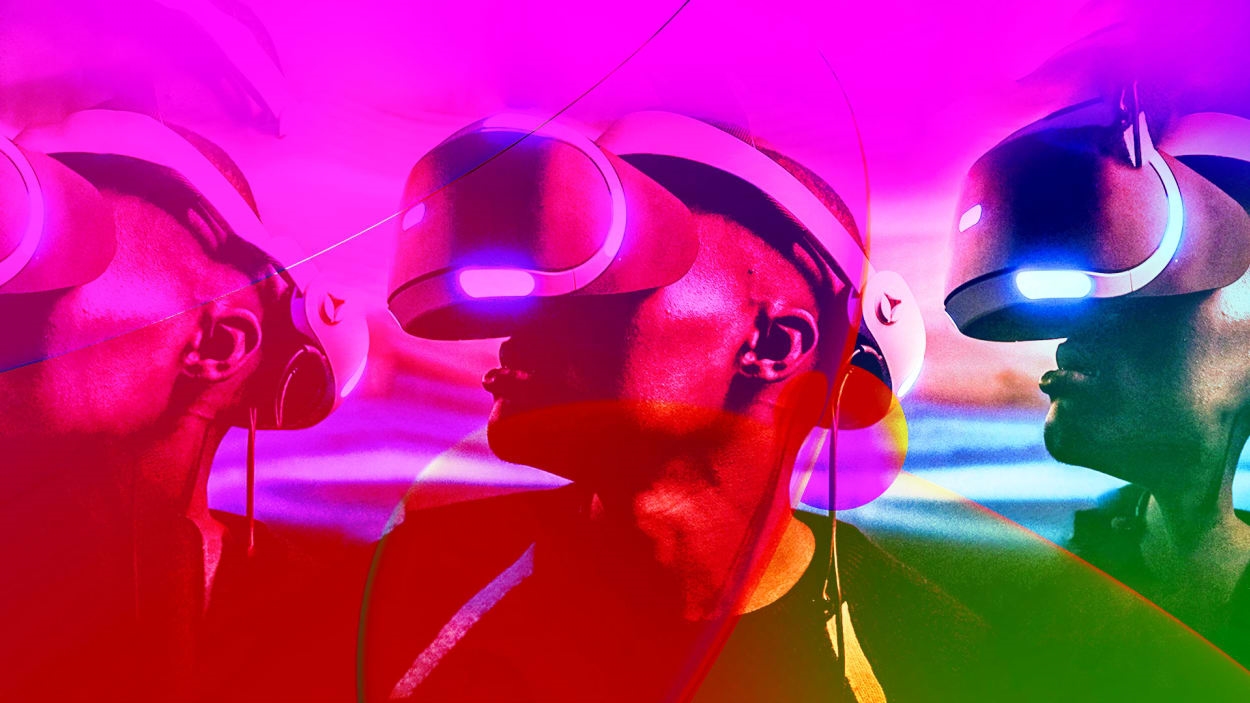2022: the year we sobered up about the metaverse
The conversation about the metaverse continued in 2022, but much of the earlier excitement about the concept cooled. The metaverse, as it was described to many of us in 2021, is going to be something like the next big evolution of the internet: a virtual public space where you can work, play, shop, create, and hang with friends (their avatars). The websites and platforms we experience in 2D on our screens today will become immersive 3D destinations created within the lenses of new, wearable consumer tech.
But in 2022 reality set in that the metaverse, as originally defined, is a very hard thing to build and probably won’t happen anytime soon.
Abusing the term
So far, the experiences that feel most like a metaverse come from the gaming world–think Niantic’s Pokémon Go, Epic Games’ Fortnite, Roblox, and World of Warcraft. And those experiences are mainly viewed on 2D screens, so the 3D and immersive aspects are limited.
“I think it’s one of the most misused and abused, hyperinflated terms I’ve seen in a long time,” said Unity CEO John Riccitiello in a November interview with Fast Company. “I find it more than mildly irritating—the meaning’s gotten lost.”
Riccitiello, whose company makes the 3D graphics engine that’s used in thousands of games and in many early 3D immersive experiences, doesn’t see today’s internet moving very quickly toward his concept of a metaverse.
“Mostly the Internet today is not real time–this will be real time. It’s mostly going to be 3D, not 2D,” he said. “It’s mostly going to be interactive versus not. It’s mostly going to be persistent [i.e. objects stay in the same place in virtual space], which it’s not [currently]. It’s mostly going to be social, which it’s not.”
The Meta-verse
When most people hear the metaverse term today they think of Mark Zuckerberg and Meta, the company formerly known as Facebook. Meta reports that in 2021 it spent $10 billion trying to develop metaverse hardware and experiences, and the results of that investment saw in 2022 aren’t all that inspiring.
Meta’s social VR app, Horizon Worlds, and its work VR app, Horizon Workrooms, are animated places where people are represented by cartoony avatars. Mostly, they are places created within the closed-off environments of virtual reality headsets (Workrooms incorporates real-world environments, as augmented reality does, only minimally). While Meta has made improvements to these experiences—especially Workrooms, in which users can now project apps from their real-life computer onto three screens within the headset—they still seem clunky and unfinished. And, of course, these are Meta-only experiences; they are not open worlds where you can just take off and go visit some other destination.
Hardware is hard
In order to experience the internet in a 3D and immersive way, you need new personal technology hardware that’s built for the medium. That hardware is most likely mixed reality glasses, but the industry has so far given us mixed reality headsets that are too big and bulky to wear for long periods, and aren’t sufficiently advanced to create compelling 3D experiences.
“I think it’s fair for me to say that both I and probably every other single pioneer of the space is disappointed with the present state of both AR and VR,” said Midjourney founder/CEO David Holz in a recent interview with Ben Thompson’s Stratechery newsletter. (Long before moving into generative AI, Holz founded Leap Motion, which in the early 2010s developed a groundbreaking motion tracking input device for computers.)
Aside from Meta, Apple is the only other major tech company (reportedly) working on a mixed reality consumer hardware device, and that company is famously secretive about its R&D. And while there’s certainly an argument that tech companies shouldn’t be out talking to journalists about technology that isn’t fully developed, Holz argues that secrecy can actually be quite harmful.
As Holz pointed out to Stratechery, Early excitement about AR/VR technology during the 2010s led to a wave of consolidation in the industry as big tech companies such as Apple, Meta, and Google swallowed up many of the AR/VR startups that were doing groundbreaking work in the space. Many of these startups talked and worked openly with each other while struggling to overcome various technical roadblocks. For instance, Holz said, Leap Motion people interacted with engineers at Oculus, before Meta (then Facebook) acquired the pioneer VR headset maker for $2 billion in 2014.
“We were all talking to each other constantly and bouncing ideas off each other, it was pretty open,” Holz said. “It wasn’t seen as particularly competitive because we kind were like, ‘Boy, either we figure this out together or we don’t.’”
That kind of open interaction becomes impossible once a technology is bought by a big tech company, Holz said. “No one will talk to anyone. None of the big tech companies talk to each other. And so you lose all of the cross-pollination.”
The end result: a lack of diversity in the product designs that eventually emerge. “Effectively what we got is instead of having 10 VR companies coming out with different headsets of different designs, we got one,” Holz said. “And the one design was not the most adventurous or the most coherent design. It was conservative.”
Meta’s $1,499 Quest Pro headset was the most advanced piece of mixed reality hardware to arrive in 2022. It represents a collection of logical, gradient improvements to the VR headset, but it is not a big leap forward toward a consumer mixed reality device that might speed the creation of a real metaverse.
Of course it’s not just a hardware problem. The industry will need to adopt a set of standards that will allow users to move between metaverse destinations, in the same way that HTML allows them to move freely between websites with whatever browser they choose. But that work has barely begun.
Brand power
Despite these daunting challenges, big name brands remain fervently interested in the metaverse. A recent PwC study finds that the metaverse remains a top-line agenda item for many CIOs and CTOs. Two thirds (66%) of those surveyed say they’re “actively engaged in how the metaverse will deliver sustainable business outcomes.” Emmanuelle Rivet, PwC’s TMT & Global Technology leader, tells Fast Company PwC believes that companies will encourage executives to experiment and find new ways to use virtual 3D environments “as the full metaverse continues to develop throughout 2023.”
“We’ll also see more businesses investing in a chief metaverse officer next year,” Rivet says.
Indeed a desire among big brands to set up shop in the metaverse will be a tailwind behind the tech industry’s work on the necessary hardware and software. Epic Games, for example, has been holding big branding events in Fortnite, such as concerts and car company virtual test-drives, since at least 2020.
In 2023, we’ll likely see the release of Meta’s Quest 3 headset, and possibly the release of Apple’s first stab at a mixed reality headset. It’s possible that the first company to release a compelling piece of consumer hardware to access a metaverse will set off a shockwave that flows outward through the whole industry, inspiring new investment, new ecosystems, and new experiences in its wake. Then (whenever “then” is) it’s game-on. Ready Player One.
“The brilliant thing about platform changes of this magnitude is its unpredictability,” investor and metaverse thought leader Matthew Ball told Fast Company in 2021. “Innovation is recursive: Some brilliant technology is created which inspires more innovation, leading to new behaviors, unlocking new use cases. Suddenly, something no one thought we needed–like a persistent, real-time rendered simulacra of the world–will feel essential.”
(32)



